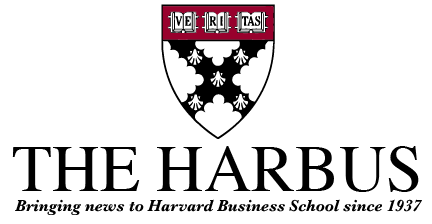
We know Google traces its roots to Stanford, Dropbox to MIT, and Facebook to Kirkland House, but what recent high-tech company will HBS be bragging about years from now. The answer could be CloudFlare, founded by HBS MBA ‘09 grads and Section D classmates Matthew Prince and Michelle Zatlyn.
What exactly is this behind-the-scenes, 20-person company that was just named “Most Innovative Network & Internet Technology Company of 2011” by the Wall Street Journal? Conceived by Prince and Zatlyn during their 2nd year Silicon Valley Immersion trip replica watches, CloudFlare has been described in a variety of ways. Michael Arrington called the San Francisco-based company “muffler repair for the internet.” Techcrunch called it “a CDN (content delivery network) for the masses.”
But Prince resists CloudFlare being called a CDN, saying, “We use CDN-like technology. And we definitely do bring a CDN to the masses. But we really think of ourselves as rebuilding networks from the ground up.” (See box below “Just what exactly does CloudFlare do?”)
However you describe CloudFlare, it is clearly flourishing. Since its founding two years ago at HBS, the company’s network now extends to 15 billion page views and 350 million visitors per month, which is more traffic than Amazon, Wikipedia and Twitter combined. “One out of every five people on the Internet has passed through our network in the last month,” says Prince. “Kind of stunning.”

Stunning indeed. Zatlyn describes how they conceived and launched the fast-growing company by focusing on internet security. “We basically pitched Tom Eisenmann on a sofa at Silicon Valley Immersion.” She remembers saying to him, “Hey, we have this idea for a field study and a business for the business plan competition.”
Four months later, Zatlyn and Prince, along with technical co-founder Lee Holloway, won the competitive HBS Business Plan Contest on the strength of their plan and a field study of website operators focused on infrastructure issues. Prince says the two keys to winning the competition were: (1) showing a need in the market, and (2) accessing that market with a trusted community.
The pair earned a highly-coveted spot in Highland Capital’s “Summer@Highland” incubator program and eventually a $2.05 million first round of funding by Venrock and Pelion in November 2009. The company’s strong growth and execution led to a large Series B Round of $20 million led by NEA late last year. The NEA partner who spearheaded the investment is noted VC Scott Sandell who said: “CloudFlare is in a unique position to transform the online experience for users around the world.”
Zatlyn and Prince cite a number of HBS influences as critical sources of support, with Professor Eisenmann being at the top of the list. They recount how they took his Entrepreneurship course their first year, and he then encouraged them from their very first discussions beginning in the lobby bar at the Sheraton in Palo Alto. “Tom was a cheerleader from the beginning,” says Prince. “And he’s continued to be in touch. Every time he is out here, we see him.”
Zatlyn agrees that Eisenmann has been one of their biggest supporters. She says, “There are so many things that Tom did for us. At the time, there was lots of uncertainty and challenges ahead. Tom’s excitement and encouragement – that was invaluable.”
Eisenmann vividly recalls being “present at the creation” on that fateful Silicon Valley trip. He supervised Prince and Zatlyn’s independent study project during that spring semester, in which they wrote their business plan, and then served as their faculty advisor for the Business Plan Contest. He says that CloudFlare was unique compared to other HBS startups. “CloudFlare was unusually ambitious in the scope of its vision,” he says, “And unusually complex.”
This complexity, Eisenmann says, can be both good and bad, but that the duo “did a terrific job in crafting a clear and compelling pitch.” He adds, “At the Business Plan Contest, they delivered the best presentation I’ve ever seen from a student team.”
Prince and Zatlyn also cite Professor Clay Christensen, whose “Building and Sustaining a Successful Enterprise” class heavily influenced them. “BSSE was a huge motivation for Matthew and me,” says Zatlyn. “Specifically the whole notion of disruption.”
Prince draws on BSSE principles in discussing CloudFlare. “It costs $20,000 a month to set up Akamai. Our highest-priced plan is $20 a month. We are trying to be the absolute definition of disruption.”
Prince and Zatlyn acknowledge direct competitors to CloudFlare, citing Yottaa and Incapsula, but say they do not necessarily view Boston-based Akamai as one of them. “We’ve been net customer-positive for Akamai, and they’ve been net customer-positive for us,” Prince says. “I don’t think they are a direct competitor.”
CloudFlare’s future seems promising but not necessarily easy, according to industry experts. Says Richard Day, co-founder and former CTO of Speedera Networks, a VC-backed CDN acquired by Akamai in 2005, and current Chief Customer Advocate for the CDN Highwinds: “I think it is truly interesting how CloudFlare is bringing a freemium service to the CDN market.” Day adds, “But against the backdrop of other huge players with pockets much deeper and engineering teams much wider, I think it will be a challenging road.”
Zatlyn and Prince understand this, and yet their optimism continues to grow just as their company does. They both express great appreciation for HBS, the Rock Center – where their original business plan remains on file – as well as their experiences in school in launching CloudFlare. “Matthew and I both have such fond memories of HBS,” says Zatlyn. “Silicon Valley Immersion will be back this year, and we’re looking forward to hosting more students.”
With the continued rapid growth of CloudFlare, Zatlyn and Prince have set the bar quite high for these and other future HBS high-tech entrepreneurs.
––––––––––––––––––––––––––––––––
Just what exactly does CloudFlare do?
| “CloudFlare brings big-company speed to your itty bitty website” | Venture Beat |
| “CloudFlare is the poor man’s Akamai” | Christopher Penn, Co-Founder Pod Camp |
| “CloudFlare is not Akamai, nor is it Zscaler, at least not yet” | Michael Montecillio, Senior Threat Researcher |
| “CloudFlare gets your site to load faster” | Tech Geeks, Technology Review Site |
| “CloudFlare seems more tailored towards performance aiming at the general populace” | Jan Husdal, Research Geographer, Transport Economics Research Group |
| “CloudFlare offers a quite impressive and affordable CDN solution” | Christoph Ono, Senior Interactive Developer at Fi |


